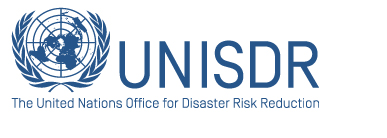

 |
 |
|
About
UNISDR |
Regional Unit Disasters in the Americas The entire western part of the American continent, from Alaska to Chile, forms part of what is referred to as the Pacific Ring of Fire, implying that the earth’s crust is in a constant process of transformation. The volcanic and seismic activity, characteristic of Andean and Central American countries as well as of North America’s western coast provide tangible evidence of this process. This is also true for the geological dynamics of the Caribbean Basin and of the Antilles in particular. While dynamics of geological origin can be said to have remained constant, climate and weather-related hydrometeorological phenomena have increased in magnitude and frequency. In recent years, the Americas have experienced a significant number of disasters such as floods, hurricanes, storms, earthquakes, avalanches, volcanic eruptions and wildfires and others which have resulted in the loss of thousands of lives and hundreds of millions of dollars in material damages. Developing countries in particular have had a terrible price to pay in that disasters draw attention and resources away from other areas where they are desperately needed in order to overcome poverty. At the global level, the number of people at risk has increased by 70 to 80 million per year. More than 90 percent of global demographic growth is taking place in developing countries and among population with the least access to resources and with greatest exposure to risk. Over the last three decades alone, an estimated 160 million people in Latin America and the Caribbean were affected by disasters triggered by natural hazards. At present, many people in the Americas live in cities located in areas of seismic activity. As a consequence of poverty and demographic pressures, ever more people are living in areas prone to flooding and landslides. Poor territorial planning and environmental management as well as a lack of regulatory mechanisms increase risk, while at the same time exacerbating the negative effects of disasters. About the UNISDR - Regional office for the Americas Who we are UNISDR - Regional office for the Americas is the UN interagency secretariat with the mandate to coordinate, promote and strengthen DRR on a global, regional, national and local level. UN/ISDR secretariat is working towards a world without needless losses from disaster – following a guiding mission to catalyze, facilitate, and advocate for action that will protect lives and livelihoods from the impact of natural hazards. The UN/ISDR headquarters is based in Geneva, Switzerland. It works through regional offices in Africa, Asia, the Americas and Europe. In keeping with the mandate of the UNISDR, the Regional Unit for the Americas, strives to provide support to actors throughout the region, including North America, Latin America and the Caribbean, in fostering a culture of disaster prevention and contributing to build disaster resilient nations and communities. Our office is located in Panama City, Panama. What we do We build and support partnerships and networks with development and humanitarian groups worldwide, to build disaster resilience and promote DRR. Partners include UN agencies, governments, international organizations, regional actors, NGOs, civil society and the private sector. We advocate for increased government action on DRR. We promote the integration of disaster reduction policies and legislation into sustainable development planning, for example by supporting multi-stakeholder national, regional and thematic platforms on DRR. We inform people by producing information and education materials, and promoting scientific and technical research, including guidance on DRR strategies, protection and preparedness measures. We develop tools to make information available to a wide public, such as the journal ISDR Informs and the online resource HFA-Pedia. We communicate with all stakeholders in society who are concerned with disaster prevention. We work with journalists to raise awareness of the importance of disaster prevention – often neglected by the media in the aftermath of disasters. We reach out to communities that are potentially at risk from the impact of natural hazards, by communicating about disaster prevention at a local level. We campaign, together with partners, to build awareness of DRR, and reduce communities’ vulnerability to the impact of hazards. Our campaigns aim to strengthen DRR policies and to influence the attitudes of decision-makers and society at large, towards dealing with disaster risk. We promote the implementation of the Hyogo Framework for Action (HFA) – a set of guidelines, adopted by 168 countries worldwide, on how to integrate DRR policies into national development agendas. We work to build a common understanding of the HFA and to make its priorities of mitigating the impact of natural hazards and reducing vulnerability a political and socioeconomic reality. |
| © UNISDR |